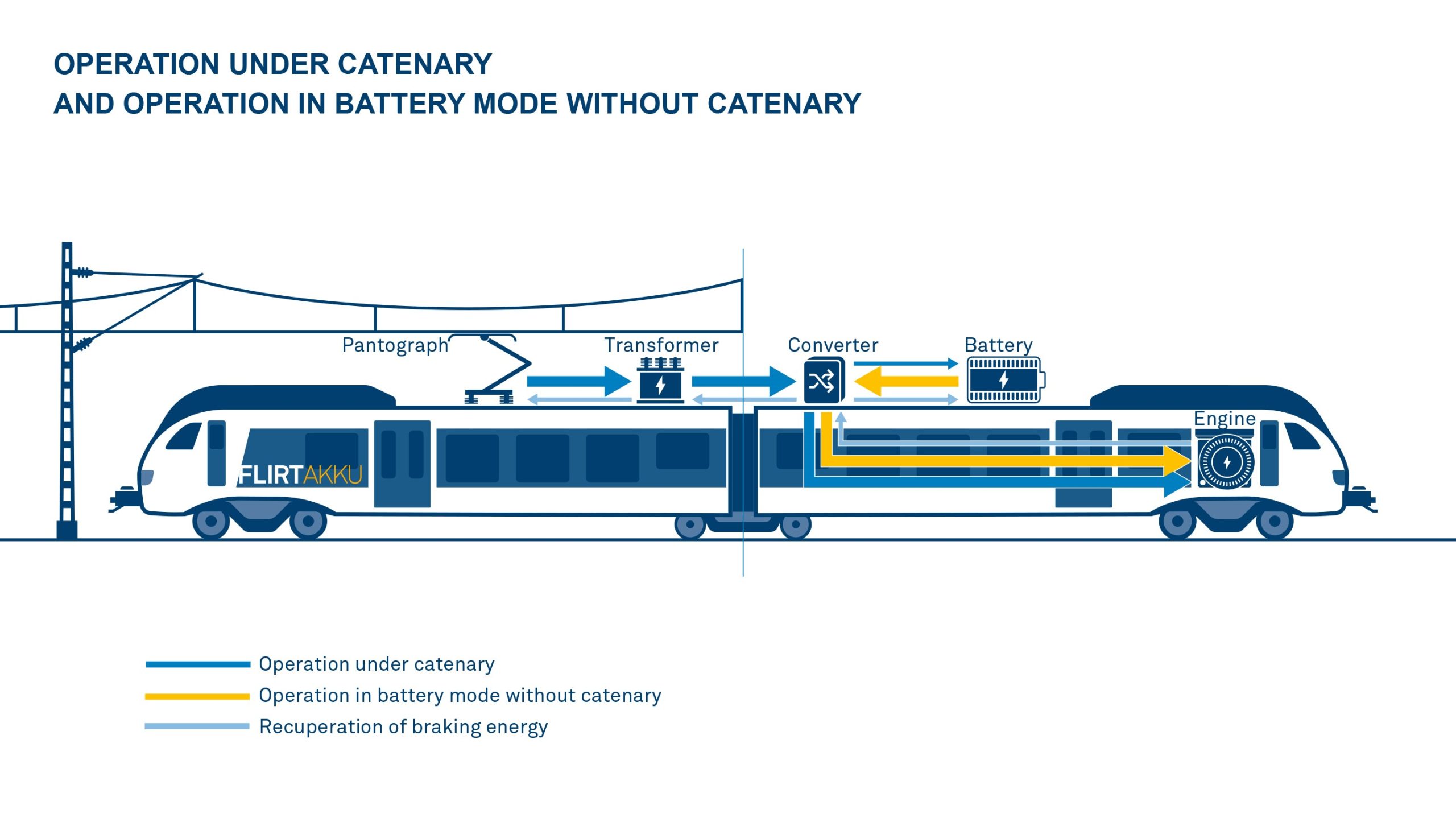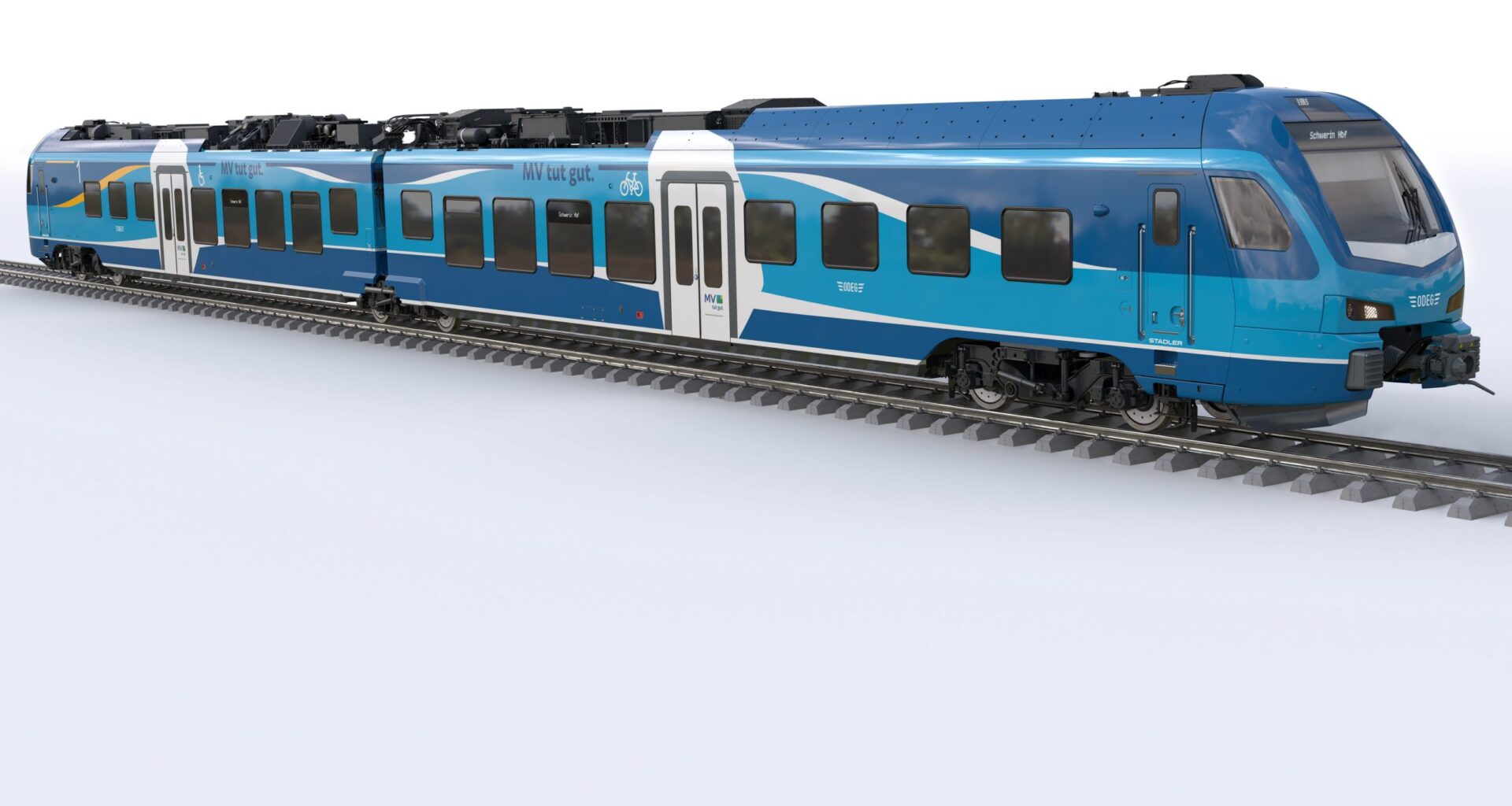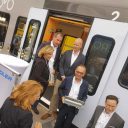Stadler and German regional operator ODEG have unveiled the future of West Mecklenburg’s new battery-electric FLIRT Akku fleet. The trains are set to replace diesel models on regional routes from 2027 in a small but concrete step for rail; decarbonisation, amid the long and costly task of fully electrifying Germany’s network.
A battery-electric powered train quietly rolled into the West Mecklenburg town of Schwerin this month — the same model that will soon form the backbone of private operator ODEG’s new regional fleet. Stadler and Ostdeutsche Eisenbahn GmbH (ODEG) marked the symbolic start of the battery-led rail project with a ceremonial trip to the small town of Parchim, offering a first look at the FLIRT Akku trainset that will enter passenger service in December 2027.
While the train used wasn’t one of ODEG’s own, it was a near-identical unit from Schleswig-Holstein — the first German state to roll out the FLIRT Akku in regular service. ODEG has ordered 14 of these battery-electric trains from Stadler to serve regional routes across Mecklenburg–Western Pomerania. The trains will run on lines connecting towns like Rehna, Schwerin, Ludwigslust and Parchim, as well as seasonal services to lakeside destinations such as Waren (Müritz), Malchow and Plau am See. These routes aren’t fully electrified, making them a natural fit for the FLIRT Akku’s battery-powered operation.
Where Germany’s wires don’t go
The trains can operate under overhead wires where available, charging their onboard batteries in the process. Once the wires end, they switch to battery mode, with a claimed range of at least 80 kilometres between charges. That’s enough to bridge the gaps on fragmented regional lines, without the need for expensive and time-consuming infrastructure upgrades. Stadler says the trains can reach top speeds of 140 km/h and have significantly improved acceleration compared to earlier battery models.
 The FLIRT Akku is the battery-powered version of the FLIRT series. © Stadler Rail.
The FLIRT Akku is the battery-powered version of the FLIRT series. © Stadler Rail.
Each two-car unit will offer 98 seats, barrier-free access, Wi-Fi, modern passenger information systems, and large multi-purpose areas for bikes, prams and wheelchairs. They’ll be maintained locally at the upgraded ODIG workshop in Parchim and painted in the colours of the Mecklenburg–Western Pomerania state.
CEO of Stadler Germany Jure Mikolčić said the fleet represented “a new generation of climate-friendly mobility,” while ODEG managing director Stefan Neubert described the “quiet, comfortable” trains as the traction concept that best fitted the region’s needs.
Alternative drive…
The project is being financed through Germany’s federal “Alternative Drives in Rail Transport” scheme, with additional support from the EU’s Recovery and Resilience Facility (RRF) via the German DARP programme. Funding is coordinated by NOW GmbH and implemented by Project Management Jülich (PtJ), making this a fully public-backed investment despite ODEG being a private operator. And it’s not the country’s only investment in the Stadler platform.
The West Mecklenburg fleet joins a growing number of FLIRT Akku deployments across Germany, with Stadler already delivering 55 units to Schleswig-Holstein and 44 to Rhineland-Palatinate, where they’re also being used to replace diesel on semi-electrified routes. While each project is regional in scale, they share a national purpose: keeping rail decarbonisation moving in areas that can’t wait for masts and wires.
… low electrification
Germany’s aiming to fully electrify its rail network, but progress is slow — as of 2025, only around 62% of the national network is wired. In rural states like Mecklenburg–Western Pomerania, that figure drops even lower. Electrification projects often stall over costs, permitting delays, and local opposition to infrastructure changes. And then there’s the question of Germany’s geographically sizable network. Battery trains offer a practical stopgap — and potentially, a long-term solution for low-density areas where full electrification may never be economically viable.
Hydrogen has also been pitched as an alternative traction solution for similar routes in Germany, but after a high-profile rollout in Hesse was reversed due to repeated reliability issues – a “two-year series of mishaps” with Alstom apparently “doing a disservice to trust in new propulsion technologies” – German operators and public funders now appear to be leaning more heavily on battery technology to plug the electrification gap.
Stadler says the FLIRT Akku’s modular battery system allows for future upgrades or removals, depending on how infrastructure evolves. In the meantime, “power islands” — short electrified sections — can keep the trains running without needing full line conversion, as has been the case in Schleswig-Holstein. That’s practical as Germany has pledged to end diesel-only train operations by 2040, which is a long way off. With each new battery-electric fleet like ODEG’s, that deadline looks a less far off.


